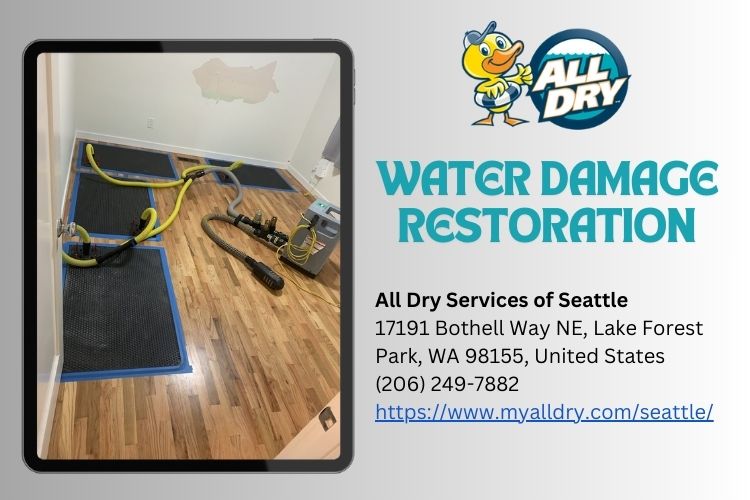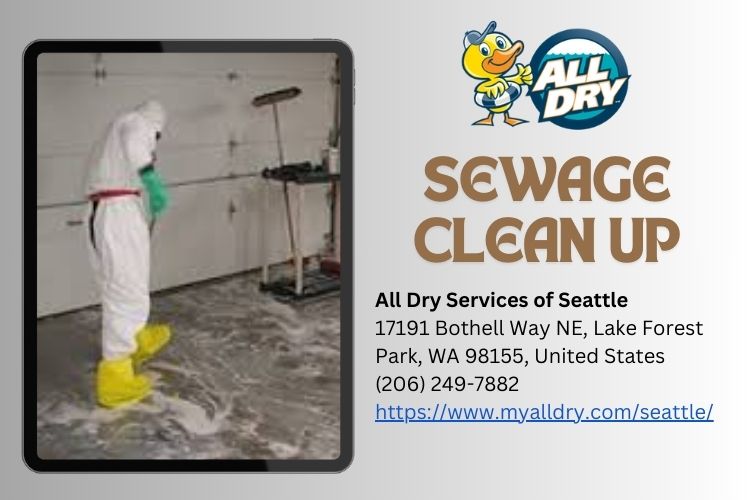Introduction: Understanding Water Damage and Mold Growth
Water damage is an unfortunate reality for many homeowners, particularly those living in areas susceptible to flooding or heavy rain. In Lake Forest Park, the picturesque environment can also lead to unexpected water-related issues. When water infiltrates your home, it doesn't just lead to structural damage; it creates a perfect breeding ground for mold. This guide aims to provide you with a comprehensive understanding of mold remediation after experiencing water damage in Lake Forest Park.
What is Water Damage Restoration?
Water damage restoration is the process of cleaning up and repairing a property affected by water intrusion. This can be caused by various factors including:
- Natural disasters: Heavy rains, floods, or storms. Plumbing issues: Burst pipes or leaking fixtures. Appliance failures: Malfunctioning washing machines or dishwashers.
The goal of water damage restoration is to prevent further deterioration of the property and ensure that it is safe and habitable again.
The Importance of Immediate Action
When faced with water damage, time is of the essence. Mold begins to grow within 24-48 hours in damp conditions. Acting quickly can prevent extensive mold growth and minimize health risks associated with mold exposure.
Understanding Mold Growth: The Basics
Mold is a type of fungus that thrives in moist environments. It reproduces Water damage restoration - All Dry Services of Seattle through tiny spores that can travel through air and settle on various surfaces, where they can develop into colonies if conditions are right.
Common Types of Mold Found After Water Damage
Aspergillus: Often found indoors; some species can produce mycotoxins. Cladosporium: Commonly grows on fabrics and wood. Penicillium: Known for its blue-green color; often associated with decay. Stachybotrys chartarum (Black Mold): A toxic variety that poses serious health risks.Health Risks Associated with Mold Exposure
Exposure to mold can lead to various health issues, especially for sensitive individuals such as children, the elderly, or those with pre-existing respiratory conditions. Common symptoms include:
- Coughing Sneezing Skin irritations Difficulty breathing
Your Comprehensive Guide to Mold Remediation After Water Damage in Lake Forest Park
Now that we understand the basics of mold growth and its implications, let’s dive deeper into the steps involved in effective mold remediation following water damage.
Step 1: Assessing the Damage
Before any remediation can take place, it’s crucial to assess the extent of both water and mold damage in your property thoroughly.

Key Factors to Consider During Assessment
- The source of water intrusion Duration of exposure Type of materials affected
Step 2: Ensuring Safety First
Before proceeding with any cleanup efforts, prioritize safety:
- Wear protective gear including gloves, masks, and goggles. Ensure proper ventilation in affected areas.
Water Extraction Techniques for Effective Restoration
After assessing the situation, the next critical step involves removing excess water from your property.
Methods for Water Extraction
Sump Pumps: Ideal for large volumes of water; effectively drains flooded areas. Wet/Dry Vacuums: Useful for smaller amounts of standing water. Dehumidifiers: Helps reduce humidity levels post-extraction.Key Considerations During Water Removal
During extraction:
- Identify hidden pockets where water may collect. Monitor moisture levels continuously using moisture meters.
Drying Out Your Property Post-Water Damage
Once you've removed excess water, drying out affected areas must be your next focus.
Effective Drying Techniques
Air Circulation:- Use fans strategically placed around wet areas. Open windows when weather permits for natural ventilation.
- Increase indoor temperature slightly to promote evaporation.
- Utilize chemicals like silica gel to absorb moisture from the air.
How Long Should Drying Take?
Typically, drying should take 24–48 hours depending on humidity levels and material saturation.

Identifying Signs of Mold Growth Post-Drying Phase
Even after thorough drying efforts, it's vital to remain vigilant about potential mold development:
Signs That Indicate Mold Presence Include:
Musty odors lingering even after drying. Discoloration on walls or ceilings (green or black spots). Peeling paint or wallpaper indicating moisture beneath surfaces.Your Comprehensive Guide to Mold Remediation Techniques
Once you've identified mold growth post-water damage, immediate action is necessary:
DIY vs Professional Remediation Services
DIY Methods
While minor infestations might seem manageable through DIY methods like bleach solutions or vinegar sprays:
Pros:
- Cost-effective for small patches
Cons:
- May not eliminate all spores and could lead to regrowth
Professional Services
For significant infestations or sensitive environments (like homes with young children):
Pros:
- Expertise ensures thorough treatment
Cons:
- Higher costs involved
Steps Involved in Professional Mold Remediation
If opting for a professional service—here's what you can expect:
1. Evaluation and Inspection
Professionals will conduct a detailed assessment using advanced tools like thermal imaging cameras and moisture meters.
2. Containment Measures
To prevent spores from spreading during cleanup:
Methods Include:
- Sealing off contaminated areas using plastic sheeting.
3. Filtration Process
Using HEPA filters helps trap airborne spores effectively during remediation efforts.
4. Removal of Contaminated Materials
Any porous materials like drywall may need removal if heavily infested with mold.
FAQs About Mold Remediation After Water Damage
Q1: How long does it take for mold to grow after water damage? Typically within 24–48 hours under favorable conditions.
Q2: Can I remove mold myself? Minor infestations may be manageable; however, significant growth usually requires professional intervention.
Q3: What are signs that I need professional help? Persistent odors or visible colonies beyond small patches indicate professional services are necessary.
Q4: Is there any way to prevent future mold growth? Regular maintenance checks on plumbing systems and ensuring proper ventilation reduces risks significantly.
Q5: How do I choose a reliable restoration company? Look for certified professionals who offer references and have experience dealing specifically with flood-related damages.
Q6: Is mold removal covered by homeowner’s insurance? It often depends on policy specifics related to flooding; reviewing your coverage is advisable.
Conclusion: Taking Proactive Steps Towards Prevention
In summary, addressing mold remediation after experiencing water damage isn't just about responding reactively but also taking proactive measures toward prevention in Lake Forest Park homes. Understanding how quickly molds proliferate gives you an edge over potential health hazards lurking post-water incidents.
Utilizing this comprehensive guide will empower you as a homeowner — whether you're tackling small issues yourself or enlisting professional help — knowing you've got the tools at hand for effective resolution will go a long way in maintaining a safe living environment free from harmful molds!
Contact Us
All Dry Services of Seattle
Address: 17191 Bothell Way NE, Lake Forest Park, WA 98155, United States
Phone number: (206) 249-7882
Website: myalldry.com/seattle